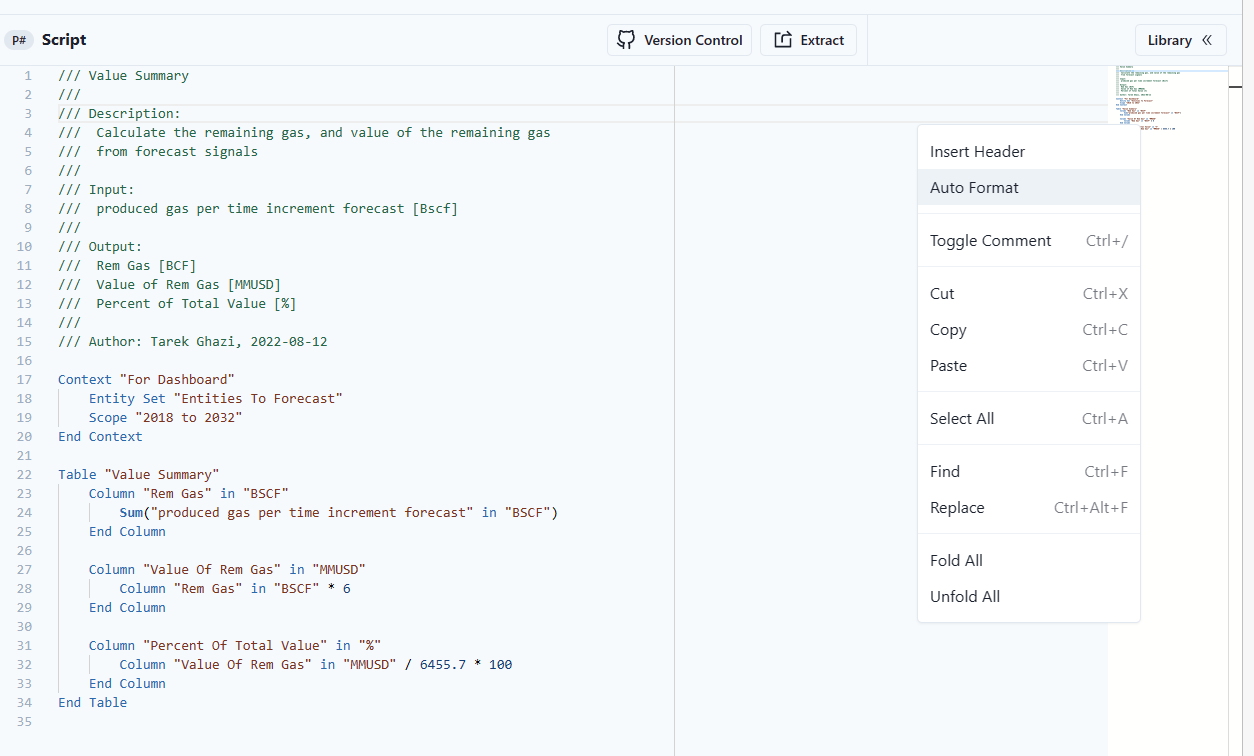Summarizes some ways to keep the workspace looking similar with multiple authors
The guidelines and conventions stated in the following sections serve the following purposes:
- They create a consistent look to the workspace, so that everyone working with it can focus on the content.
- They facilitate copying, changing, sharing, and maintaining the content of the workspace.
- They demonstrate best practices for working with Datagration NAMING CONVENTIONS.
Formating
To easily change a script to be formatted according to the best practices, use the Auto Format by right clicking on the P# script view.

Signals
- all lower case
- don't use numbers to start the signal name (important when working in R)
- use well known abbreviations only
- no pascal or camel casing
- don't use numbers to abbreviate (e.g. 2 instead of to)
- use a single space between words
Hierarchies, Scripts, Workflows, Schedules, Entity Sets, Scopes, Contexts, Columns, Tag Groups, Tags, Labels, etc.
- capitalized descriptive names
- don't use pascal or camel casing
- don't use underscores
- use a single space between words
- don't use numbers to abbreviate (e.g. 2 instead of to)
Examples:
Workspace Values
- use pascal casing
- don't use numbers to abbreviate (e.g. 2 instead of to)
Examples:
bad: My workspaceValue -> good: MyWorkspaceValue
P# CODING RULES AND STYLE GUIDELINES
Comments
- comment tables and columns if the purpose is not obvious
- insert a header describing the script
-
max line width 80 columns (unless screen readability is severely affected)
-
use tabs to indent code (1 tab per level)
-
use brackets () to structure column definitions
-
don't mix static and dynamic tables
-
use pascal casing when calling functions
-
use pascal casing when using operators (Or, And)
-
always place a single space around operators and assignments (+, -, !+, !-, *, /, =)
-
separate function arguments with a single space
Examples
Column "Gapfilled Water" in "m3"
GapFilling("produced water per time increment" in "m3", "linear")
End Column
Column "WOR" in " "
Column "Gapfilled Water" in "m3" /
"produced oil per time increment" in "m3"
End Column
Column "Well Head Pressure Upper Threshold" in "bar"
If IsNotNull("well head pressure upper threshold" in "bar") Then
"well head pressure upper threshold" in "bar"
Else
If IsNotNull(
ValueFromParent("well head pressure upper threshold" in "bar",
"Layer",
"Reservoir Hierarchy"))
Then
ValueFromParent("well head pressure upper threshold" in "bar",
"Layer",
"Reservoir Hierarchy"
)
Else
ValueFromParent("well head pressure upper threshold" in "bar",
"Field",
"Reservoir Hierarchy"
)
End If
End If
End Column
-
be consistent
-
only save data to signals if reused often or the calculation takes a long time (e.g. cumulative)
